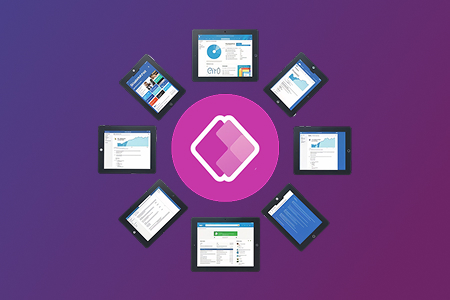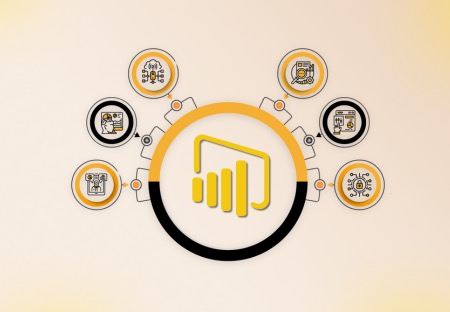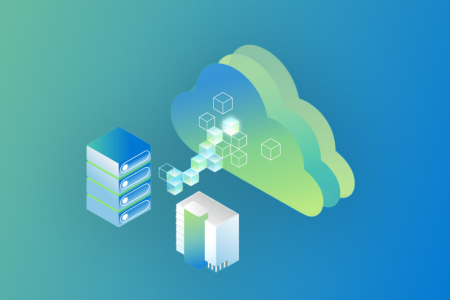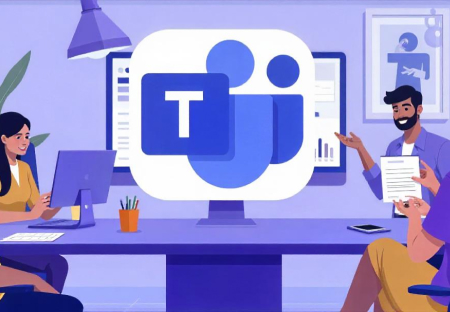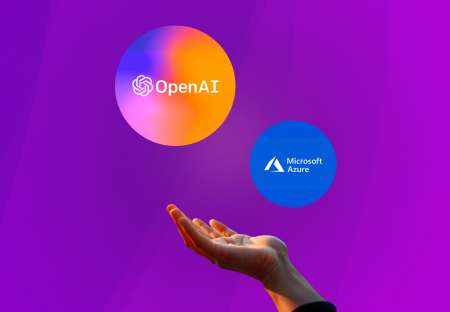Enhancement of functionality. Innovation more rapidly and efficiently. Reduced operational and infrastructure costs. Scalability improvement. Improved overall experience and application. Enhanced ability to bounce back. It’s like a door has been unlocked.
For example, shifting your business’ apps to the cloud has numerous advantages, including those outlined above. The problem is that many firms don’t grasp that realising the cloud’s benefits requires a little more than just application transfer. Not every application can run on the cloud since not all have been designed.
Contrary to popular belief, most legacy programs are based on a single database with a monolithic architecture with very less scope of on demand Scalability, Agile Development, High Availability and many more. Despite the simplicity of this technique, it has significant constraints in terms of size and complexity and continuous deployment, start-up time, and scaling.
Let’s gain some insight into what Application Modernization is?
An application’s modernization is the process of bringing it up to date with newer technologies, such as newer programming languages, frameworks, and infrastructure. This process is referred to as “legacy modernization” or “legacy application modernization”. Making improvements to efficiency, security, and structural integrity is akin to re-modelling an older house. As an alternative to replacing or retiring an existing system, application modernization extends the useful life of an organization’s software while taking advantage of new technology.
Why go for app modernization?
By implementing application modernization, a business may safeguard its existing software investments while also taking advantage of the latest advancements in infrastructure, tools, languages, and other technology areas. A sound modernization approach can reduce the resources needed to run an application, increase deployment frequency and reliability, improve uptime and resilience, and provide other benefits. Thus, a digital transformation strategy often includes an application modernization plan.
Why do enterprises need application modernization?
Most businesses have made significant financial and operational investments in their current application portfolio. “legacy” has a negative connotation in software but is one of the most important business applications. No one wants to throw out these applications and start over because of their high costs, productivity losses, and other issues. Therefore, it is sensible for many businesses to modernize their existing applications by using newer software platforms, tools, architectures, and libraries.
Let’s understand some trends in legacy application modernization
Multi-cloud and hybrid cloud are two of the most significant trends in modernizing legacy apps. Multiple public cloud services can be used for cost savings, flexibility, and other reasons. On-premises infrastructure and public and private clouds are all included in the hybrid cloud model.
Rather than requiring software teams to rewrite their critical applications from scratch, modernization helps them optimize their existing applications for these more distributed computing paradigms. Legacy modernization is aided greatly by multi-cloud and hybrid cloud deployments.
The IT industry’s adoption of containers and orchestration to package, deploy, and manage applications and workloads is another modernization trend. A more decoupled approach to development and operations — specifically a microservices architecture — is best served by containers rather than a legacy app.
Here’s a look at some of the key advantages of Application modernizing your apps. Intensify the shift to digital
The need to transform the business to build and deliver new capabilities quickly motivates application modernization. It takes days to deploy a new system instead of hours with DevOps and Cloud-native tools, which helps businesses transform faster.
Change the developer’s experience.
Containerization and adopting a cloud-native architecture allow you to develop new applications and services quickly. Developers don’t have to worry about integrating and deploying multiple changes in a short period.
Delivery should be speed up.
It is possible to reduce time to market from weeks to hours by adopting best practices from DevOps. Deploying code changes quickly and human intervention-free as possible.
Hybrid cloud platforms to deploy enterprise applications.
A hybrid multi-cloud environment helps to increase efficiency by automating the operations. A result of this is “Build Once, Deploy on Any Cloud.”
Integrates and builds faster
Using DevOps principles, one can integrate multiple code streams into one. One need not worry about changes in the current environment as the entire integration cycle can be integrated at once, allowing for the last deployment to be possible.
Why Move an Application to the Cloud?
The desire to swiftly add new capabilities drives application modernization. Adopting DevOps and cloud-native tools reduces development to deployment, allowing businesses to shift faster. Most firms moving to the cloud want to be more agile, save money, and reduce time to market.
Most of them opt for the simplest ‘Lift and Shift’ model. They realized that cloud-native techniques and architectures could provide more value and innovation than traditional infrastructure-as-a-service options. Keeping old apps and architectures would hinder their capacity to innovate, optimize, and be agile and their primary cloud objectives. Cloud-native is the future of application development, allowing for rapid prototyping and deployment of new ideas. Reorganize people, processes, and workflows to be “cloud-native”; create apps with the cloud in mind. This necessitates a cloud-native development strategy that aligns with the overall cloud strategy. Demands for speedier market entry and modernization are increasing.
Re-platforming traditional apps on container platforms or refactoring them into cloud-native microservices is an option. Using Cloud Modernization approaches, modern apps may be seamlessly migrated to the cloud. Cloud-native microservices allow clients to take advantage of the cloud’s scalability and flexibility. Modernizing apps with cloud-native tools allows for seamless concurrency. To design new user experiences, productivity and integration barriers are reduced. Many cloud-native architectures address the requirements of rapid scaling up and down, thus optimizing compute and cost. These days’ business contexts demand speedier development, integration, and deployment. Requiring syncing of development and deployment cycles. DevOps tools may integrate the complete development to deployment cycle, reducing cycle time from days to hours.
What are the 6 Rs of Cloud Migration?
Each app’s value proposition and potential opportunities are clearly defined by scoring it following the 6 R system. To sum up, what are the “six Rs” of moving to the cloud? In a nutshell, there are a variety of approaches that can be used when migrating applications. Each letter of the alphabet stands for a distinct approach, value, or outcome. Retain, Rehost, Replatform, Replace, and Refactor are among the six Rs to success. This system is critical to maximizing the return on your cloud migration investment because it incorporates all four essential R’s.
Rehost
Companies looking to move their IT infrastructure to the Public Cloud commonly use the Rehost strategy, which is at the top of the list. Rehosting, also known as ‘lift and shift,’ is the most straightforward method of moving your on-premises IT infrastructure to the cloud, requiring the least amount of adjustment to your workloads and working methods. Simply copy your servers to the cloud service provider’s infrastructure and move them there. This is known as Rehosting. Even though the Cloud Provider now manages the hardware and hypervisor infrastructure, you continue to manage the operating system and installed applications. With the help of well-known tools from the Cloud Service Providers such as AWS Cloud Endure and Azure Site Recovery, you can quickly move your servers into the cloud.
Replatform
Replatforming allows you to use cloud migration to upgrade your operating systems or databases, for example, rather than lifting and shifting your servers. Cloud migration may necessitate platforming if you have outdated operating systems that the cloud provider no longer supports. When moving to the cloud, you may want to switch from a commercially supported to an open-source platform to enhance further your business case for doing so; The architecture of your applications, however, will not change because you are only changing the underlying services while keeping the core application code the same.
Refactor
Refactoring means changing the application code to take advantage of cloud-native services, which can be thought of as an ‘application modernization’. It’s possible that you’d prefer to use cloud provider serverless functionality rather than server-based applications. Choosing to rehost or replatform an application first is a common strategy for businesses looking to get some momentum behind their cloud migration. However, if you rehost or replatform an application you want to modernize, there is a risk that the refactoring will be deprioritized, and the application modernization may never take place. This is the most resource-intensive option.
Repurchase
Managing installed software on infrastructure you manage may no longer be necessary if you use commercial off-the-shelf (COTS) applications available as Software as a Service (SaaS). It’s also possible that you’d prefer to entirely use a different application from a different vendor.
Retire
To avoid paying for application infrastructure that does not provide any business benefit, it is critical to identify no longer needed applications before migrating to the cloud.
Retain
You might also have applications in your portfolio whose migration to the cloud isn’t an option because they simply aren’t good candidates. Moving them to the public cloud may not make financial sense for some applications because you’ve just invested in new on-premises infrastructure or because the vendor refuses to support a specific piece of software in a public cloud platform. Nowadays, there are a few reasons to keep an application on-premises, but this will depend on your situation and the needs of your business.
Learn More: Application Modernization Services of Metaorange Digital




